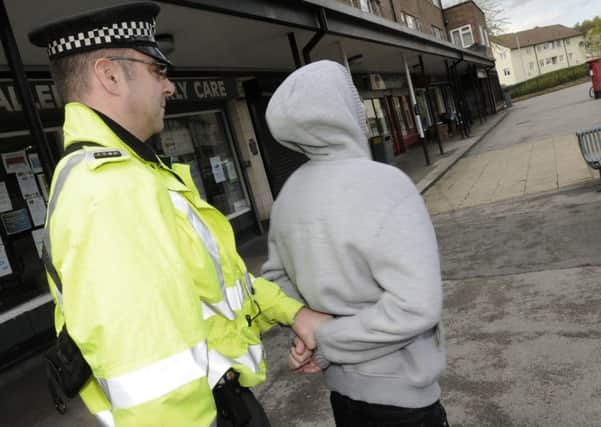Youth crime figures revealed in Mansfield and Ashfield


The alarming extent of child crime, showing children as young as 12 are being arrested for sexual and other violent offences, is revealed by a Chad investigation.
Figures recorded by Nottinghamshire Police between 2009-2014 show the overall rate of youth crime has fallen by more than a third.
Advertisement
Hide AdAdvertisement
Hide AdPolice say engaging with youngsters is the best way to nip the problem in the bud.
But the figures recorded by Nottinghamshire Police between 2009-2014 make disturbing reading.
The majority 412 were for violence against the person but they also included 20 for robbery and 13 sexual offences.
Youngsters aged between 6-8 were dealt with for criminal damage, theft and violence against a person, which were dealt with via a community resolution.
Advertisement
Hide AdAdvertisement
Hide AdChildren under 10 cannot be prosecuted as they are below the age of criminal responsibility.
A police spokesperson said: “We recognise that young people sometimes do things without considering the consequences or the seriousness of their actions.
“This, combined with the fact that those under 10 are legally not answerable to the law, means we focus a lot of our attention on preventative work.
Advertisement
Hide AdAdvertisement
Hide Ad“We work closely with the local authority and other youth agencies and undertake a lot of activity in local schools to engage with young people as well as identify and support those most at risk of getting involved in crime.
“In cases where children have committed low level crimes, and where there is no previous misbehaviour and genuine remorse shown, we try to mediate between both parties under the Restorative Justice process.
“This method has us working closely with both the victim and the ‘offender’, and their families, to establish a solution that suits all involved, such as a written apology, or voluntary work in the community.
“It not only avoids children being criminalised for rash, misjudged actions, it is also an important tool in quickly reintegrating them into school so their education does not suffer as a result.”